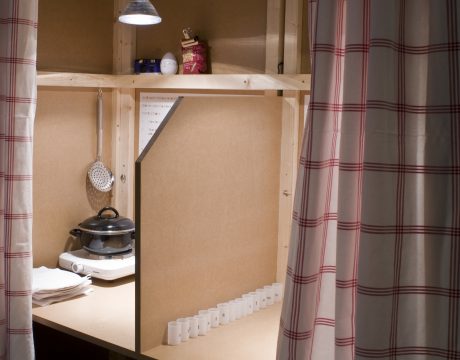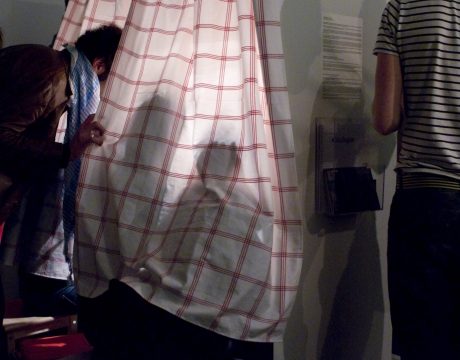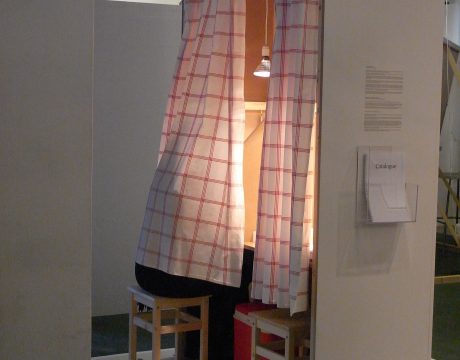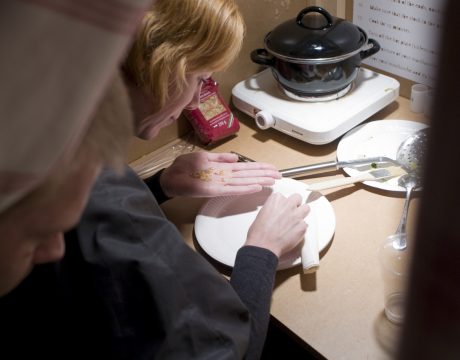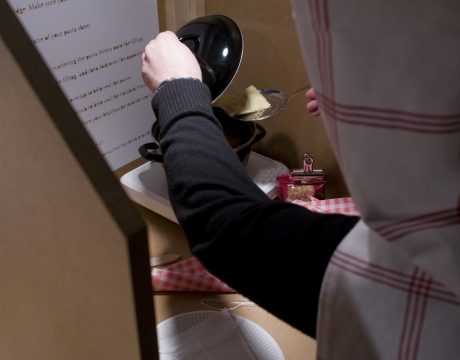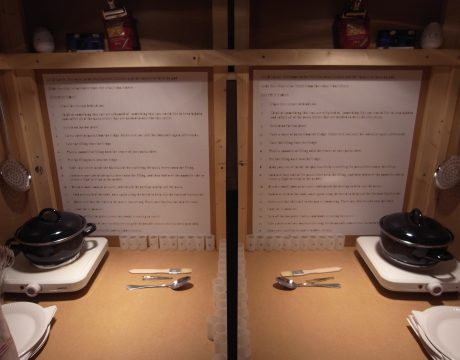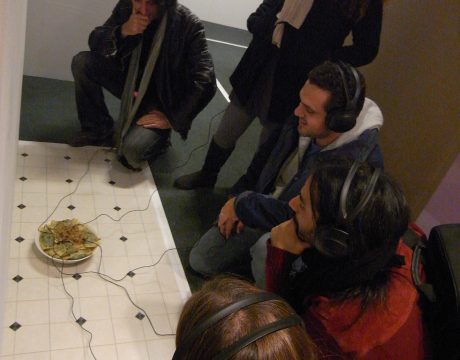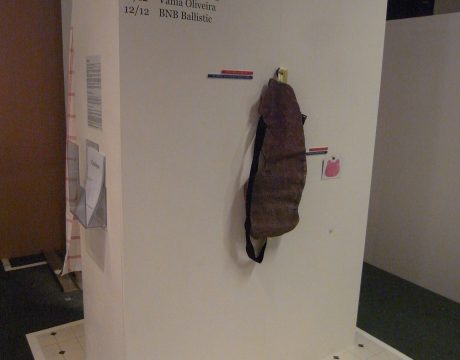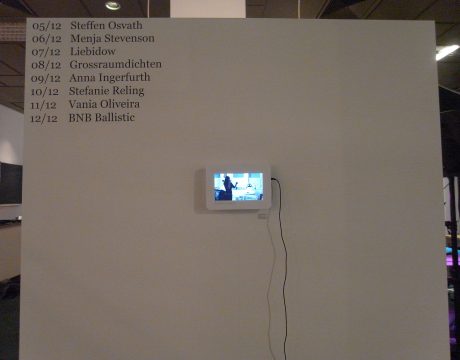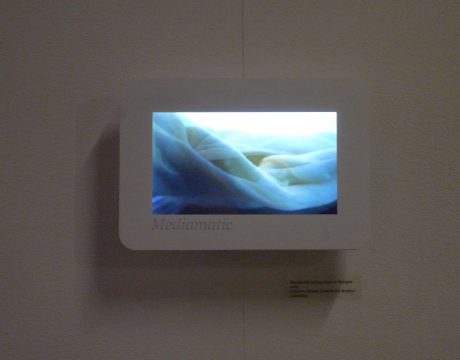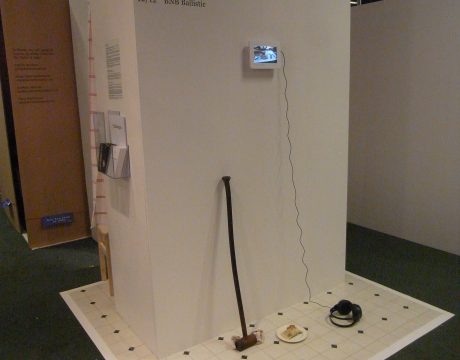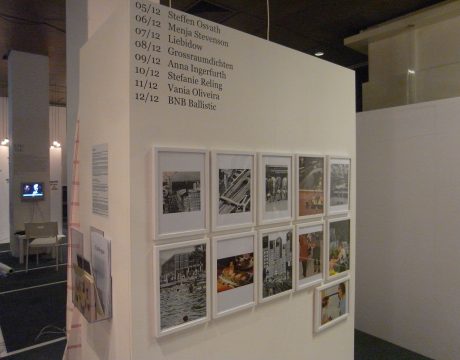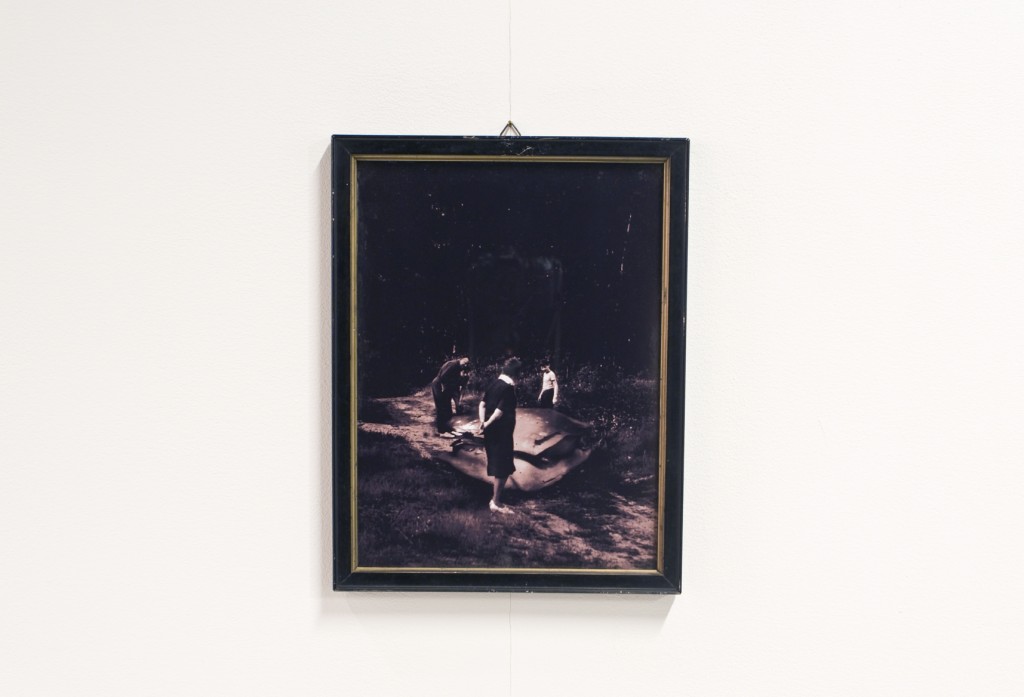
Hiding the WHAT/WHO/WHERE/WHEN from the WHAT/WHO/WHERE/WHEN
The Stuttgart Pavilion at the Mediamatic Biennial
Curators: Susanne Kudielka & Kaspar Wimberley
Artists: Menja Stevenson, Renate Liebel & Eva Bredow, David Baur & Markus Niessner, Stefanie Reling, Anna Ingerfurth, Steffen Osvath, Pauline Füg & Tobias Heyel & Ludwig Berger, Vânia Oliveira
“Maultaschen must remain Maultaschen, and no salmon or other fashionable ingredients belong inside” (trans.) Vincent Klink, chef (weblink)
For the Mediamatic Biennial we presented an exhibition of Maultaschen mutations that have been designed by a selection of artists based in Stuttgart. Each ‘Maultaschen’ will respond to the relationship each artist has to Stuttgart, while playfully exploring and subverting the potential symbolic, socio-cultural or political relevance of the Maultaschen, as a cultural barometer for our city and the region of Baden-Württemberg.
The exhibition also included documentation from a series of visits to one of the oldest independent producers of Maultaschen in Stuttgart (the ‘Peter Wachendorfer Maultaschenfabrik’), a small family run business just around the corner from where we live in Stuttgart-West.
Alongside this exhibition of culinary curiosities we operated the interactive Maultaschen kitchen, inviting our audience to create their own Maultaschen, slipping into the Stuttgart mentality to neatly hide away their riches or cover up their shameful secrets.
Curatorial statement
Culinary traditions can be perceived as cultural barometers, often revealing the habits, attitudes or characteristics of those that helped form the tradition. The ravioliesque ‘Maultaschen’ of Baden Württemberg are no exception. Maultaschen are the flagship of Baden Württemberg cuisine, one of the first things many Germans associate with the region, and were recently protected against manufacturing pirates by the European Union.
The origins of the ‘Maultasche’, also referred to as ‘Herrgottsbscheißerle’ (little things that cheat on God), can be traced back to a variety of differing legends. The most popular version describes how Cistercian monks at the Maulbronn monastery wanted to eat meat during lent. To hide their sins from the eyes of god they attempted to disguise the meat, mixing it together with spinach, herbs and bread, before encasing this mixture in pasta.
But the definitive history of the Maultaschen is similarly tucked away from sight. Alternative legends point to a simple deviation from Italian ravioli, first brought over to Germany by Italian protestants, while etymologically the word ‘Tasche’ dates back to the 16th century and would now translate to ‘Ohrfeigen’ (being hit around the ears).
Does this tradition, and the mythology that surrounds it, reflect the Schwäbian/Stuttgart mentality, lifestyle or stereotype? People from Stuttgart certainly have a reputation for their thriftiness (they like to hide the meat), and for their technological and business related inventiveness (they will find an efficient and creative way to do it). And what artistic potential might be drawn from the Maultaschen’s associative and narrative qualities, and how might this relate to the city of Stuttgart? What activities or riches are we ashamed of, and what stories or truths are being covered up or denied? What so called immoralities are getting brushed under the carpet, and how is the luxury hidden away from view?
Stuttgart is a wealthy so-called conservative city in which corporate investment (and influence) in both public and political life/space is unashamedly visible. Perhaps the most prominent example of this is the giant Mercedes Benz star (with a diameter of 5m) that is left to rotate above the central station. What or who is the god in today’s Stuttgart? (For the 6th largest city in Germany Stuttgart is unusual in that it does not boast a large church or cathedral.)
Cover-ups: Hiding histories
What history is present within the collective conscience, and what gets hidden within the footnotes? What history is forgotten under a blanket of time and what riches can be uncovered?
After the Second World War residents in Stuttgart were left to tidy up and rebuild a bombed-out city. They piled up the rubble on the outskirts of the city, creating a mountainous memorial known as Monte Scherbelino. Over time the grass and the trees have grown over the bricks, shattered archways and broken statues.
Less known is how the mayor in 1946 took the opportunity to bulldoze large areas of the city centre that were still standing after the war, erasing much of the remaining historical architecture to make space for a new modern city that could become the powerhouse of the German car industry. In a modern day parallel the luxury concern Breuninger have been given permission to clear an area of the city centre to build the ‘De Vinci’ shopping district. The state-owned buildings that are due to be removed include the site of the infamous Hotel Silver, used by the Gestapo during the Second World War to murder local opposition. You could also look at the controversial railway project Stuttgart 21, that will include a new subterranean central station, and will eventually involve the demolition of the ‘Nordbahnhof’, an area that functions as a center for the alternative arts in Stuttgart. Our cultural heritage and the layers of history and memory that float in space are being brushed aside or covered up to make way for commercial developments. A future without a past?
“In comparison to cities such as Munich or Cologne, the architect Roland Ostertag believes that Stuttgart has inexcusably neglected the culture of commemoration and remembrance” (trans.) (weblink)
